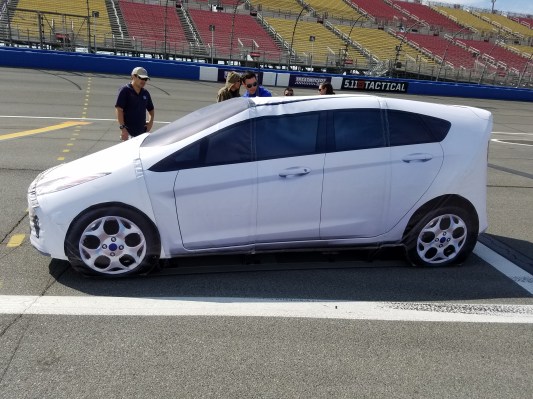Automatic emergency braking systems, or AEB, will be installed in 99% of all new passenger vehicles by 2022. Toyota has promised to have it on all of its vehicles by 2017, and many vehicles already have the sensors and technology in place. But that doesn’t mean every system on every vehicle works exactly the same way. That’s why AAA put five 2016 vehicles to the AEB test in 70 trials. (No vehicles were harmed in the tests; they crashed—or didn’t—into a blow-up Prius-looking “soft car.”)
The study found that AEB systems are designed to work differently, though that may not be apparent to consumers. Some systems are designed to bring the car to a complete stop when a possible collision is detected. Other systems are designed to slow the car down, leaving the final actions to avoid the collision up to the human driver.
Not surprisingly, systems that can stop the car completely reduced vehicle speeds by 79%, while those meant to slow the car down reduced speed by 40%. But testers were surprised to find that in collision tests under 30 mph, even those systems meant to just lessen the crash rather than avoiding it did indeed avoid the crash altogether a third of the time.
When going a bit faster, up to 45 mph, the systems that are meant to prevent crashes reduced speed by 74% but only avoided the collision in 40% of tests. And systems that merely scrub speed could only scrub about 9% at these higher speeds. AAA admitted in its press release that the test cars were “pushed beyond stated system limitations and proposed federal requirements,” but 45 mph seems to be a common speed for arterial neighborhood streets.
Whether the system slows the car all the way to a stop or just helps out by reducing speed, AEB is intended to prevent rear-end crashes, which account for 2,000 deaths and more than half a million injuries annually, according to the NHTSA. At 30 mph, the benchmark speed the systems were designed to meet, “a speed reduction of just 10 mph can reduce the energy of the impact by more than 50%,” said Megan McKernan, of the Automobile Club of Southern California’s Automotive Research Center, which partnered with AAA for the tests.
AEB technology is available on more than half of new cars being sold already, and 9% of US drivers already have AEB in their vehicles, according to a AAA survey, even though the median package price that includes the technology is $2,775. And as with nearly all driver assist technology, people who’ve experienced AEB in action are more likely to trust it than those who haven’t (71% versus 41%).
